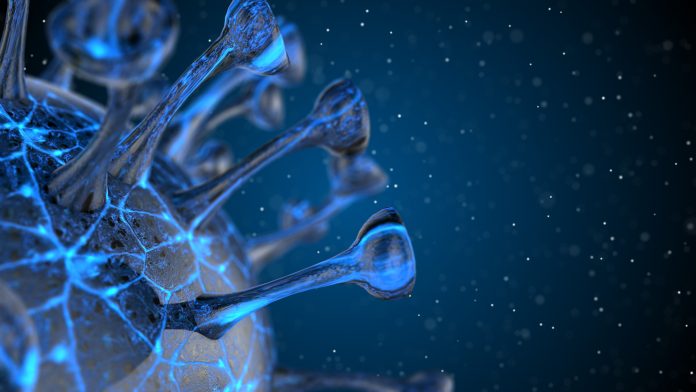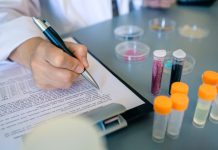Aarthi Janakiraman, Research Manager, Chemicals and Advanced Materials at TechVision, Frost & Sullivan, explores if nanotechnology aids the battle against COVID-19
The world is at present reeling under the impact of the highly infectious coronavirus disease 2019 (COVID-19/2019-nCoV) outbreak. The World Health Organization (WHO) has declared it a Pandemic and a state of emergency was issued at the end of January. At the time of writing this article, more than 210 countries have been affected, with more than 3,688,107 cases worldwide (Worldwide, May 5, 2020) with a mortality rate climbing gradually. The COVID-19 outbreak has put an enormous amount of pressure on our society, especially to healthcare infrastructure worldwide.
The outbreak has fast-tracked the testing and development of effective ways to address and overcome the extremely precarious situation and has emphasised the need for the scientific community to collaborate and co-create methods, protocols and products to mitigate clinical and health management challenges in the future.
Research projects are underway by all stakeholders, be it universities or companies to identify the most effective way to test, monitor and respond to the outbreak. Various businesses across the world are responding to the situation by manufacturing products that can help first responders, healthcare professionals and the affected and to meet the ever-rising demand for essential tools to fight the virus. Countries have formed teams to understand, evaluate and address challenges. For example, Oxford-based Nanopore’s MinION device is being used to conduct DNA and RNA sequencing analysis of the samples collected from positive COVID-19 tests, so patients to understand the evolution of the virus as a part of the Genome Sequencing Alliance formed by the UK.
The potential role of nanotechnology?
Touted as one of the game-changing technologies of the century, nanotechnology has the potential to aid in developing solutions that can help in the prevention, diagnosis and treatment of COVID-19. Nanotechnology can bring new prospects for developing affordable and scalable detection methods, safe personal protection equipment and new effective medical solutions.
Nanosensors for detection
Nanosensors are already available commercially with its application landscape wide and varied. Its scope in the detection of virus and bacteria is already established. Researchers are already trying to modify and tweak the existing protocols and processes to develop nano- and bio-sensors that can help in detection of the coronavirus.
In response to the European Commission calls for proposals and innovations, a team of photonic scientists co-coordinating at ‘ICN2’ (the Catalan Institute of Nanoscience and Nanotechnology, Spain) has developed a nanophotonic biosensor that could potentially detect ‘day one’ infection (i.e. low viral load) on patients. While successful in laboratory conditions, the sensor still needs further testing and work for it to be viable commercially. Another research team from Empa, ETH Zurich and Zurich University Hospital is working on an optical nanosensor that is intended to detect the presence of coronavirus in the air. If proven successful, the device can be used for the detection of viruses in busy places and help in early intervention. Similar studies have been showcased by various researchers across the globe.
These research initiatives, despite being in an early stage, can be considered as a starting point for the development of cost-effective, rapid test kits that are accurate and sensitive to the presence of even low load of viruses.
Nanoparticles and nanomaterials for prevention
Hand hygiene is established as one of the most effective ways to prevent the transmission of most nosocomial infections, including coronavirus. However, compliance to frequent hand washes, in both professional and residential set-ups is quite minimal, leading to increased transmission of infections. Various commercial sanitisers are available for use for both healthcare professionals and public alike. Metal nanoparticles (NP), especially silver (Ag) and gold (Au) are used in various disinfection solutions. AgNP is already established to possess effective anti-bacterial and anti-viral properties. Additionally, it is also fast-acting and effective even at low concentrations. The broad spectrum of activity also helps extend its use for protection against other microbes. Nanoparticles can be incorporated into various formulations, ranging from sanitisers to disinfectant solutions. Another application of these nanoparticles can be in the personal protective equipment (PPE) domain. These NP can be incorporated into polymeric matrices and fibres that are used for the manufacture of protective clothing for first respondents and healthcare professionals to increase safety. Researchers are already investigating its commercial feasibility. Nanocoatings in masks, hospital sheets, bedding and other surfaces can help in long-term protection and potentially reduce incidence.
Nanotechnology for treatment
Research on the potential use of nanoparticles for drug delivery and for the development of therapeutic agents has been underway for a number of infectious diseases, especially in the field of oncology. Various studies have already established the effectiveness of nanoparticles for targeted and sustained drug delivery. Studies have also established that NP can be used to target specific pathogens through surface modification and functionalisation. Therefore, the use of such NP for drug formulations can increase the effectiveness of the treatment protocols; NP can be functionalised to dissolve the lipid membrane or bind the proteins and even potentially encapsulate the RNA of specific viruses. Preliminary studies have been done to establish the potential effectiveness of gold nanoparticles, against the coronavirus family and its potential use as an adjuvant in a SARS-CoV vaccine. The results can be used to extrapolate and test the use of these NP against the present one.
The final word
With research results that can establish the effectiveness to fall back on (even if it is not against coronavirus), implementation of nanotechnological solutions can potentially help in the detection, treatment and management of such pandemics. While the debate around the long-term effects and safety of nanotechnology will still hold good, especially in relation to nanomedicine, synergistic approaches across the global research community can help in developing solutions that can minimise the impact of such pandemics at a global scale.











